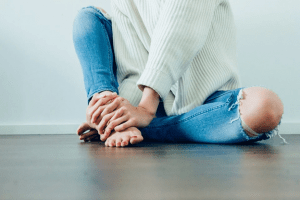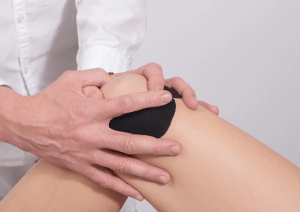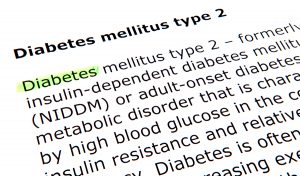Guest Blog: Why Seniors Need To Hire An Elder Law Attorney
Given the rather complex legal concerns that the elderly have to face, seniors or those who are helping them make decisions should work hand-in-hand with an elder law attorney.
Seniors have rather unique legal needs, and elder law attorneys use their expertise in the different fields of law that elder law encompasses to serve those needs.
Let’s take a closer look at some of the reasons seniors need the services of a lawyer who specializes in elder law.
Help With Medicaid
Seniors are going to need long-term care, and Medicaid is at the forefront of providing them with the necessary funding for it. However, Medicaid’s rules and regulations for eligibility can get rather complex.
By applying legal strategies properly, an elder law attorney can help seniors navigate those complexities and get the Medicaid coverage they need and deserve, and protect their money, property, or income at the same time.
Estate Planning
The elderly will also require assistance with their estate planning.
Many seniors have yet to create wills, trusts, and powers of attorney. Others simply need to update and maintain their existing estate planning documents.
Elder law attorneys can help seniors with their estate planning to ensure that their assets are legally passed down without complication, and their wishes carried out to the letter.
Planning For Long-Term Care
It is a fact that health complications will eventually arise as people get older. For seniors, there is no better time to plan for long-term care than now, while they are still able to care for themselves.
Seniors will need to draft an advance health care directive, a document where they can specify the actions they want to be taken for their health in case they become incapacitated. They also need to plan for guardianship, so when they are no longer capable of caring for themselves, they can ensure that the court will appoint a guardian of their choosing. These are a couple of concerns that a skilled and experienced elder law attorney can help plan.
With an elder care attorney providing insight and expertise, seniors will be able to make sound legal decisions that will ensure that their future needs will be taken care of and help them get some much-needed peace of mind.
About the Author
Lauren Summers is the Content Marketing Strategist for Miller, Miller & Canby, one of the most respected law firms in Montgomery County, and the Washington, DC metropolitan area. The firm focuses on five core areas of practice: Land Development, Real Estate, Litigation, Business and Tax, and Trusts and Estates Law. In her spare time, she reads books and plays board games with her husband and two kids.
Guest Blog: Ways to Age-Proof Your Knees
You spend several hours of the day running to and fro to get tasks done. And perhaps you spend the other hours checking off your to-do list behind a computer screen. The question is, do you see yourself being able to do this with the same tenacity and fervor five, 10, 20, or even 30 years from now?
The reality is, knee pain impacts about 31 million people in the United States, often due to osteoarthritis. And the older you get, the greater your chances of developing knee issues, due to changes in your gait and posture. Fortunately, you can take steps today to start age-proofing your knees.
Here’s a look at a couple of ways to keep your knees feeling young and ready to move in the years and decades ahead.
Watch Your Body
One of the most important steps you can take to age-proof your knees is to pay close attention to your posture. Poor posture can shift your body weight off-center and forward. Compensating for this shift places extra weight on the knees.
By practicing good posture, you distribute your weight properly and remove the extra load from your knees. You can achieve excellent posture by sitting up with the shoulders back and the back straight.
Take Advantage of Knee Braces
Another way to age-proof your knees is to wear a knee brace. A well-designed brace will provide you with relief from soreness, weakness, or instability in your knees by providing your knees with extra support. A brace can also help to relieve the irritations and minor swelling tied to arthritic conditions.
Improve Your Knee Health with Confidence Today!
If you struggle with discomfort in your knees in the future, this can understandably take a toll on your physical mobility and, in turn, your mental health and overall quality of life. Although pain medication, such as anti-inflammatory medication, or a total knee replacement may help to address your problem, you can prevent your knees from getting to that point in the first place.
Age-proofing your knees doesn’t have to be complicated. Tap into the benefits of knee braces and paying closer attention to your posture to protect your knees’ health. Your future knees will thank you.
Guest Blog: How senior citizens can cope with diabetes
Diabetes is a condition that affects how the body uses glucose (sugar), the main source of energy. People with diabetes either do not produce enough insulin (Type 1), or their body does not respond properly to insulin (Type 2). The most common types of diabetes are Type 2 and gestational diabetes, which affects women during pregnancy.
As you age, your body does not respond as well to diabetes medicine. You may find that your blood sugar is harder to control. Sometimes low blood sugar is a problem too because seniors tend to be less active than younger people so they don’t use up all their stored glucose or “sugar.” If you have trouble eating or drinking because of illness or other problems, ask your doctor if you should use a pump with insulin or pills instead of shots every day.”
As you age, your body does not respond as well to diabetes medicine.
As you age, your body does not respond as well to diabetes medicine. There are several reasons for this. The most common is that your kidneys are less efficient at processing the medicine, which can result in higher blood sugar levels than intended.
Another reason could be that there is a change in how well your liver processes the medication. In some cases, it may be necessary to adjust how often or how much you take each day in order for it to work effectively and keep your blood sugar under control.
You may find that your blood sugar is harder to control.
As you age, it’s likely that your body will respond less effectively to insulin. This means that your blood sugar may be harder to control.
You might also find that it’s more difficult for you to recognize the symptoms of low or high blood sugar (hypoglycemia). If these symptoms aren’t treated quickly enough, they could lead to serious complications such as seizures or even death.
If these things happen often enough, or if they cause a lot of discomfort or pain in addition to affecting how well your body works overall (for example: feeling confused), then it might be time for an adjustment in medication or weight loss plan for diabetes so that everything runs smoothly again!
Sometimes low blood sugar is a problem.
Low blood sugar (hypoglycemia) is a problem that can occur if you have diabetes. It happens when your body doesn’t have enough sugar to meet its needs, so it sends signals to your brain that you need more of it.
These symptoms may occur:
- Sweating or shakiness
- Dizziness, weakness and fatigue
If you feel these symptoms, eat something sweet like juice or candy right away! It’s important not to ignore these warning signs because they could lead to unconsciousness if ignored for too long.
If you have trouble eating or drinking because of illness or other problems, ask your doctor if you should use a pump with insulin or pills.
If you have trouble eating or drinking because of illness or other problems, ask your doctor if you should use a pump with insulin or pills.
If you are having trouble eating or drinking because of illness or other problems, ask your doctor if you should use a pump with insulin or pills.
Take your diabetes medications as prescribed.
It’s important to take your diabetes medications as prescribed. If you don’t, it can be dangerous for several reasons:
- Your blood sugar could go up or down, which can make you feel sick and tired.
- You might get infections because of poor circulation caused by high or low blood sugar levels.
- If a diabetic gets sick with an illness such as the flu or pneumonia, it may be harder for them to recover because their immune system isn’t working properly due to high or low blood sugar levels that aren’t being properly controlled by medication (or lack thereof).
Eat a healthy diet.
You should also eat a healthy diet. Your doctor can tell you what types of food are best for your diabetes.
- Eat plenty of vegetables, fruits, whole grains and beans. These foods are low in fat and sugar and high in fiber, which helps keep you full longer so that it’s easier to control how much food you eat at each mealtime. They also contain important vitamins and minerals that help control blood sugar levels in the body. Examples include:
- Fruit such as apples or oranges; vegetables such as carrots or broccoli; whole grains such as whole wheat breads/cereals (not white bread), oatmeal (not instant packets), brown rice
Work with your doctor to make exercise a regular part of your routine.
Exercise is important for senior citizens, who are more likely to have heart disease or diabetes than younger people. Exercise can lower blood sugar levels and help you live longer.
If you have diabetes, your doctor will recommend that you exercise at least 3 times per week for 30 minutes or more each time. Try to exercise at the same time every day so that it becomes part of your routine–for example, before breakfast or after dinner every evening (or both).
Exercise can be a social activity that brings people together in ways other than just talking about their health problems!
Get tested for high blood sugar if you are experiencing symptoms, such as fatigue and frequent urination.
- Symptoms of high blood sugar
- How to test for high blood sugar
- Frequency of testing
If you are experiencing any of the following symptoms, get tested for high blood sugar:
- Fatigue and frequent urination are common signs of diabetes. If you have these symptoms, talk to your doctor about getting tested for diabetes.
If you have questions about your diabetes or treatment, talk with your doctor or pharmacist.
- Don’t be afraid to ask questions. If you are unsure about your diabetes or treatment, talk with your doctor or pharmacist.
- Don’t be afraid to discuss symptoms with family members and friends. They may be able to help you recognize early signs of problems that could lead to a serious illness or injury if left untreated.
- Ask for a copy of the results from all tests done during your visit so that they can be reviewed at home by someone who knows how they should look (e.g., doctor).
Senior citizens living with diabetes can lead productive lives if they manage their health properly.
The good news is that there are many ways to manage diabetes as you age, and these strategies can make it easier for seniors to live a full life.
Many seniors find that using insulin pumps or other forms of continuous infusion provides better control than multiple daily injections. Others may benefit from new devices such as closed-loop systems that automatically adjust dosing based on the glucose level in their blood at any given time. These technologies can help prevent dangerous fluctuations in blood sugar levels while also reducing stress on joints and muscles caused by frequent needle sticks.
It’s important to talk with your doctor about what will work best for you–and then stick with whatever plan they recommend!
Don’t let diabetes get in the way of enjoying your retirement!
Don’t let diabetes get in the way of enjoying your retirement!
You can still travel, eat out and exercise. You can do everything you always did and live a long, healthy life.
Conclusion
In conclusion, we hope that you have found this article helpful. Diabetes is a serious condition that can be managed with proper care and treatment. If you are concerned about your own health or the health of someone in your family, make sure to contact a medical professional as soon as possible!
Cold Weather and Arthritis | 5 Tips for Preventing Pain

Are painful arthritis flare-ups keeping you from doing the things you enjoy during the winter? Unfortunately, cold, damp weather and inactivity can both contribute to joint stiffness and discomfort. If this sounds all too familiar to you, don’t miss these quick tips for preventing arthritis pain in cold weather:
Keep Moving
While it might seem more pertinent to hunker down under a warm blanket at home during cold days, it is widely known that physical activity plays a key role in keeping joints loose and mobilized. Find a way to exercise each day, even if it’s just for 15 minutes at a time. Try going for a walk, practicing yoga, swimming, biking, or even simply exercising at home with a stability ball and resistance bands.
Wear Layers
Heavy winter clothes may feel great at first, but they can quickly increase your body temperature and actually leave you sweating underneath them. When that moisture on your body mixes with cool air, you have a recipe for freezing and making your joint pain worse. Opt instead to wear multiple light, breathable layers of clothing when heading out on cold days and always cover vulnerable joints with gloves and other accessories to keep them warm.
Update Your Arthritis Toolbox
Invest in basic tools that simplify daily tasks that can become more difficult during arthritis flare-ups. For example, a soft, wide handle grip that you slide over utensils like a fork or toothbrush can make it easier to eat and brush your teeth when your hands are sore and stiff. Tools like jar openers, reacher grabbers, button hooks, and dressing sticks can help too.
Get a Massage
Massage therapy has long been touted as an effective method for managing arthritis symptoms and for good reason. Massage can loosen tight muscles that are constricting joint motion and it can boost blood circulation and trigger the brain to release feel-good hormones. You can turn the heat up on a professional massage too with warm oils, hot towels, and even hot stones.
Eat Warm Foods
Oftentimes the foods that are promoted to help relieve inflammation are also those that generate thermogenic (temperature increasing) properties in the body. Ginger, cayenne, and turmeric, for example, have been shown to help relax and expand blood vessels for improved blood flow that benefits arthritic joints. Try them in a warming winter tea or soup.
Be informed about Stroke
Consider these facts about stroke from the American Stroke Association (2013): Be informed about stroke.
• Nearly 800,000 Americans annually suffer a new or recurrent stroke.
• A stroke occurs about once every 40 seconds. About every 4 minutes, someone dies of a stroke.
• Stroke is the 4th leading cause of death in the United States, killing more than 137,000 people a year.
• Risk of stroke death is higher for African American males and females than for whites. Females have a higher rate of death from stroke than males.
• In 2010, Americans paid about $73.7 billion for stroke-related medical costs and disability.
Stroke is simply defined as an interruption of the blood supply to the brain. It is most often caused by a clot that either originated in the brain or traveled from another part of the body. Warning signs of stroke include (National Stroke Association, 2013):
• Sudden weakness or paralysis, usually on one side of the body
• Sudden confusion, speaking or understanding
• Sudden changes in vision
• Sudden dizziness, incoordination, or trouble walking
• Sudden severe headache with no known cause
If you or someone you love experiences any of these symptoms, call 911 immediately. Do not delay. New medical treatments may be able to reverse the effects of stroke, but time is critical. Note the time that the symptoms started so that you can inform the medical professionals who are providing treatment.
The effects of stroke depend on the area of the brain that is damaged. Some common results of stroke are weakness or paralysis on one side of the body, difficulty walking or dressing oneself, aphasia, trouble eating or swallowing, bowel and bladder changes, cognitive changes such as memory problems, and emotional issues such as depression and mood swings. Stroke affects the entire family, so be sure to seek out resources and support in your community if a stroke has touched your family.
For stroke survivors, treatment in an acute rehabilitation facility with an interdisciplinary team approach is highly recommended and results in more positive outcomes. The rehabilitation team works together with the survivor and family to accomplish personal goals and achieve the highest level of function possible. Although some of the effects of stroke may be long-lasting or permanent, there is hope of continued progress and good quality of life after stroke.
Guest Blog: Golden Years, Golden Destinations: Tips for Traveling with Seniors
With more seniors now than ever before, there has never been a better time for retirees and those enjoying their golden years to get out there and explore all the world has to offer. Whether it’s a road trip down memory lane, or jet-setting around the globe, traveling is an excellent way for seniors to stay connected with the world and experience new cultures. But when planning a trip with elderly loved ones, it’s important to take into account the special needs of senior travelers.
8 Tips for Traveling with Seniors
- Check With a Doctor Before You Travel
A doctor can provide valuable insight into whether traveling is safe and feasible for your senior. They may be able to identify potential medical risks or recommend factors to consider when planning the best course of action.
For instance, if your senior has difficulty walking long distances or needs special medical equipment during travel, their physician can guide how to best manage these situations while away from home.
- Keep Their Mobility in Mind
Mobility is one of the most important factors to consider when managing a trip with senior companions. First and foremost, start by understanding any physical limitations that may be present in your elderly travel companions. If they have difficulty walking, or if stairs are a challenge, this should be taken into consideration when booking transportation or lodging accommodations.
Consider taking along a wheelchair or walker for their convenience during the trip and look for options that don’t involve too much walking such as river cruises or train rides. Also, keep in mind that older travelers may need more frequent rest stops while en route to their destination; plan accordingly so no one feels rushed or overwhelmed during the journey!
- Prepare Personal and Medical Documentation
It is important to prepare and bring personal and medical documentation when traveling with seniors. This includes copies of their identification, insurance cards, and any necessary medical prescriptions or treatment instructions. A personal health record app can also be useful for storing and easily accessing this information if it is needed while traveling.
- Take Frequent Breaks
One of the most important tips for traveling with seniors is to make sure you plan for frequent breaks during your journey. Taking regular breaks from any long drive or flight can help prevent fatigue and discomfort, which are both common issues for older travelers.
Breaks also provide an opportunity for seniors to get out and stretch their legs, use the restroom, or grab a snack or drink. Planning ahead and allowing yourself extra time in case of rest stops along the way can make all the difference in having an enjoyable trip. Including activities like snacks and games into your break plan can help keep spirits high as well!
- Check Your Diet
It is important to understand what types of food your senior companions can and cannot eat. Ask them what they prefer so you can plan meals accordingly while traveling. It may also be beneficial to ask their doctor or nutritionist about possible dietary restrictions before departing on your adventure.
In addition, make sure there will be food options that meet these requirements wherever you plan on going! If necessary, pack snacks such as nuts or dried fruit that your senior companion can eat instead of relying solely on meal stops along the way.
- Do not Forget to Carry Medicine
One of the most important tips for traveling with seniors is not forgetting their medicine! The first step should be reviewing your senior’s prescriptions and medications list with their doctor before leaving. Make sure you have an up-to-date list of all the medications they need, including any over-the-counter drugs that may be necessary.
Also, consider bringing along an extra supply of medications in case there are any delays in the journey or unexpected detours. Be sure to pack each medication separately, labelling them clearly so they won’t get mixed up with other items in a bag.
- Travel Insurance is a Must
Travel insurance provides coverage for medical expenses, trip cancellations, and lost luggage – all of which are especially important when traveling with an elderly person who may require special care or medication on their trip.
It also helps protect against any financial losses if something unexpected arises that prevents the trip from taking place. Travel insurance ensures that both the senior traveler and their family members are fully covered in the event of a problem during their travels.
For those who plan on taking a vacation with an elderly loved one, travel insurance should absolutely be at the top of your list when preparing for your journey.
- Confirm and Re-Confirm Your Travel Details
When planning a trip with older adults, it’s a good idea to stay vigilant and double-check all the details a few times. Due to age-related cognitive changes, elderly travelers may have difficulty retaining information about the itinerary and may require extra reminders.
Additionally, you should also be prepared to assist with packing and other preparation tasks. As the departure date approaches, ensure that all travel arrangements with airlines, hotels, and other destinations are confirmed to ensure smooth sailing.
Final Thoughts
Traveling with seniors is a great way to make wonderful memories that will last a lifetime. With the right planning and preparation, senior travelers can have an enjoyable and safe experience.
Don’t forget to ask your senior friends or family members what they need to feel comfortable and secure while traveling. Respect their preferences and plan accordingly. Prioritize safety, convenience, and comfort to ensure everyone’s needs are met during the journey.
Author Bio:
Jigar Patel is the Founder of Health-e, a HealthTech app that simplifies health records management along with providing personalized and preventative healthcare solutions. Although he has 20+ years of operations and management experience in the EPC domain, Jigar’s true passion lies in making healthcare simpler, faster and more accessible for doctors and patients alike. He strongly believes that people need to be empowered to participate in their own healthcare and is constantly thinking of ways to build this into his app. He loves to keep things simple be it in life, product design, his work or the content he develops. Being married for 10 years and having 2 kids have taught him that perspective matters, so you can always count on him to share new perspectives on various topics.






